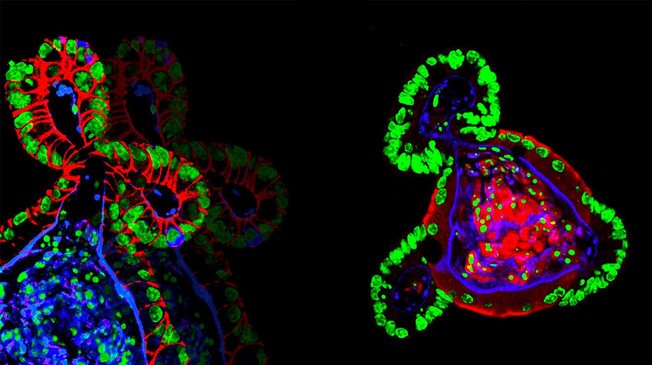
EPFL scientists have now solved the problem by developing a
Organoids need a 3D scaffold
Growing organoids begins with stem cells — immature cells that can grow into any cell type of the human body and that play key roles in tissue function and regeneration. To form an organoid, the stem cells are grown inside
The role of these gels is to mimic the natural environment of the stem cells, which provides them with a protein- and
But the current gels used for organoid growth are derived from mice, and have problems. First, it is impossible to control their makeup from batch to batch, which can cause stem cells to behave inconsistently. Second, their biochemical complexity makes them very difficult to
A hydrogel solution
The lab of Matthias Lütolf at EPFL’s Institute of Bioengineering has developed a synthetic «hydrogel» that eschews the limitations of conventional, naturally derived gels. The
Nikolce Gjorevski, the first author of the study, and his colleagues used the hydrogel to grow stem cells of the gut into a miniature intestine. The functional hydrogel was not only a goal in and of itself, but also a means to identify the factors that influence the stem cells’ ability to expand and form organoids. By carefully tweaking the hydrogel’s properties, they discovered that separate stages of the organoid formation process require different mechanical environments and biological components.
One such factor is a protein called fibronectin, which helps the stem cells attach to the hydrogel. Lütolf’s lab found that this attachment itself is immensely important for growing organoids, as it triggers a whole host of signals to the stem cell that tell it to grow and build an
Because the hydrogel is
Lütolf’s lab is now researching other types of stem cells in order to extend the capacities of their hydrogel into other tissues.
This work included a collaboration between EPFL’s Institute of Bioengineering (IBI), Swiss Institute for Experimental Cancer Research (ISREC) and Institute of Chemical Sciences and Engineering (ISIC), with the Hubrecht Institute and University Medical Center Utrecht (Netherlands). It was funded by a European Molecular Biology Organization (EMBO) Fellowship and support from EPFL.
Source: http://actu.epfl.ch/news/taking-miniature-organs-from-lab-to-clinic/


